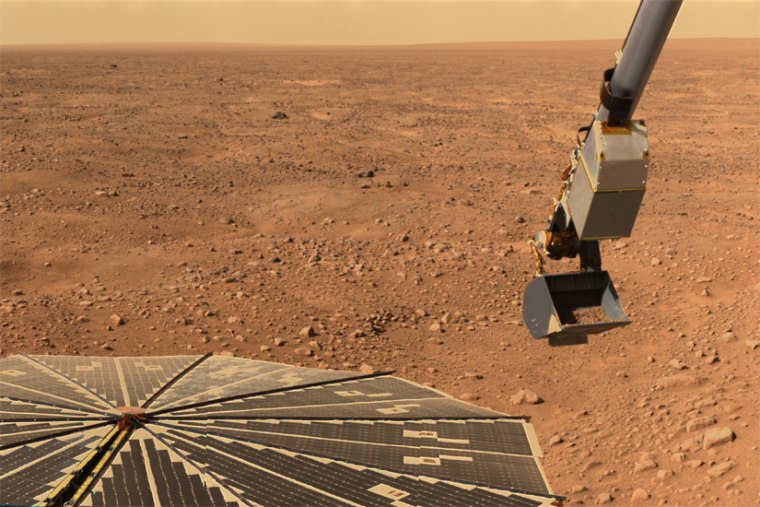Early Mars may not have been as warm or wet as scientists suspect, a finding which could impact the likelihood that the Red Planet was capable of evolving life at the time when it was getting started on Earth.
A new study presents an alternative explanation for the prevalence of Mars' ancient clay minerals, which on Earth most often result from water chemically reacting with rock over long periods of time. The process is believed to be a starting point for life.
The clays, also known as phyllosilicates, are among the strongest pieces of evidence for a Mars that once was warmer, wetter and much more like Earth than the cold, dry, acidic desert that appears today.
PHOTOS: Alien Robots That Left Their Mark on Mars
Data collected by orbiting spacecraft show Mars' clay minerals may instead trace their origin to water-rich volcanic magma, similar to how clays formed on the Mururoa atoll in French Polynesia and in the Parana basin in Brazil. That process doesn't need standing bodies of liquid water.
"The infrared spectra we got in the lab (on Mururoa clays) using a reflected beam are astonishingly similar to that obtained on Mars by the orbiters," lead researcher Alain Meunier, with the University of Poitiers in France, wrote in an email to Discovery News.
The team also points out that some of the Mars meteorites recovered on Earth do not have a chemistry history that supports standing liquid water.
But even if Mars was not as warm or wet as scientists have theorized, that doesn't close the door on the possibility of life.
The clays, for example, could have still hosted the early chemical reactions for life, even if they did not themselves form from standing bodies of water.
"On Earth, we think clay minerals were pretty important in the origin of life because the structure of them and the water they hold and the elements that are within them seem to be good things to develop RNA and we get to DNA from that," planetary scientist Brian Hynek of the University of Colorado at Boulder told Discovery News.
"Since we find clays all over Mars from the same time period, it's been thought that these are important for the question of habitability, and they certainly are. But the clays are just one piece of the puzzle," he said.
BIG PIC: Curiosity Surveys a Martian 'Mojave Desert'
For example, the fingerprints of water have been found in other minerals on Mars, though that water seems to have been more acidic.
"That's a challenge for life, but we certainly have a lot of examples of life living in very acidic places on Earth," Hynek said.
The first direct measurements of clay minerals on Mars are expected soon. NASA's Opportunity rover is making its way to suspected clays on the rim of a crater, while on the other side of the planet the roving chemistry lab Curiosity is beginning a two-year mission that will head to Martian clays near the foot of a mountain next year.
The research appears in this week's Nature Geoscience.
